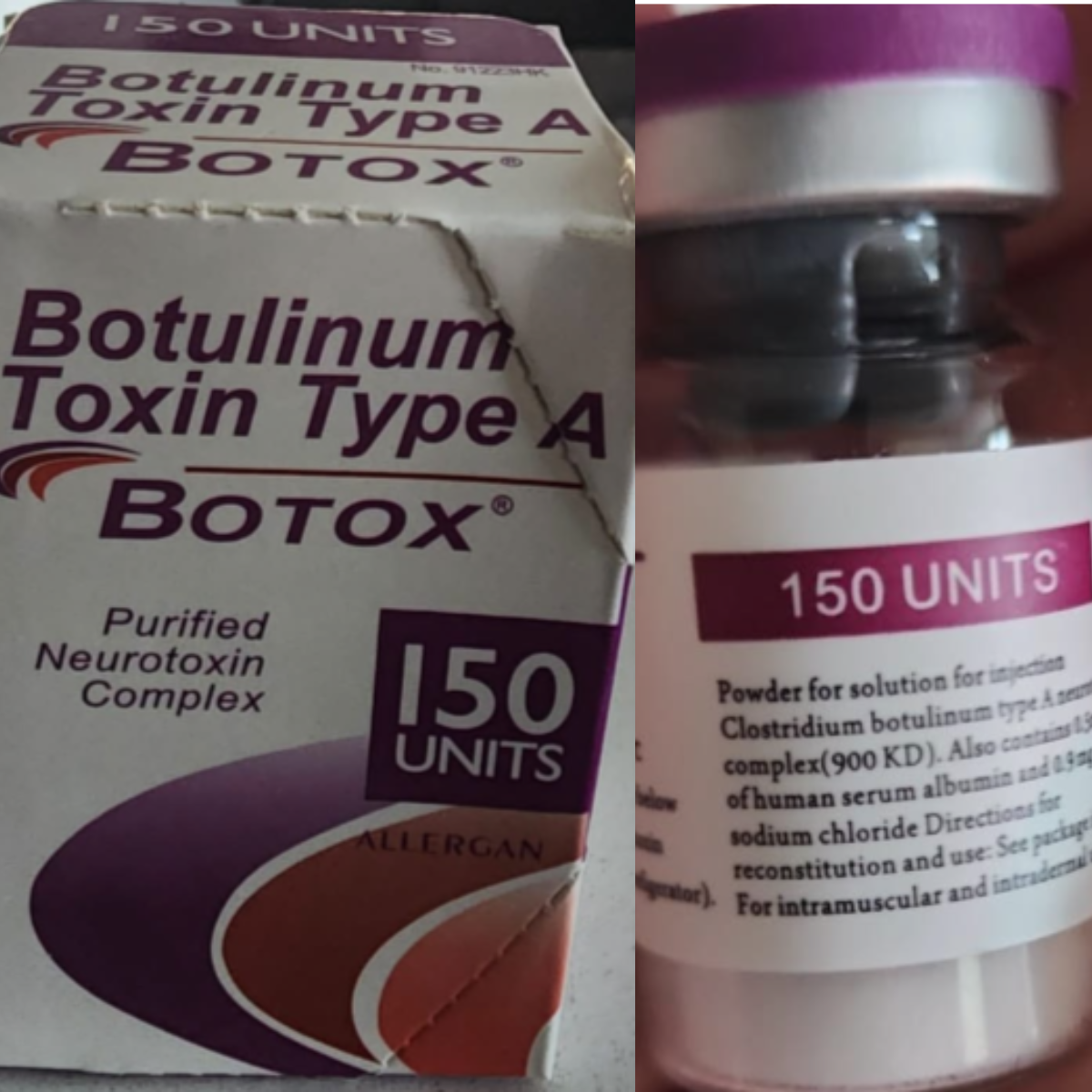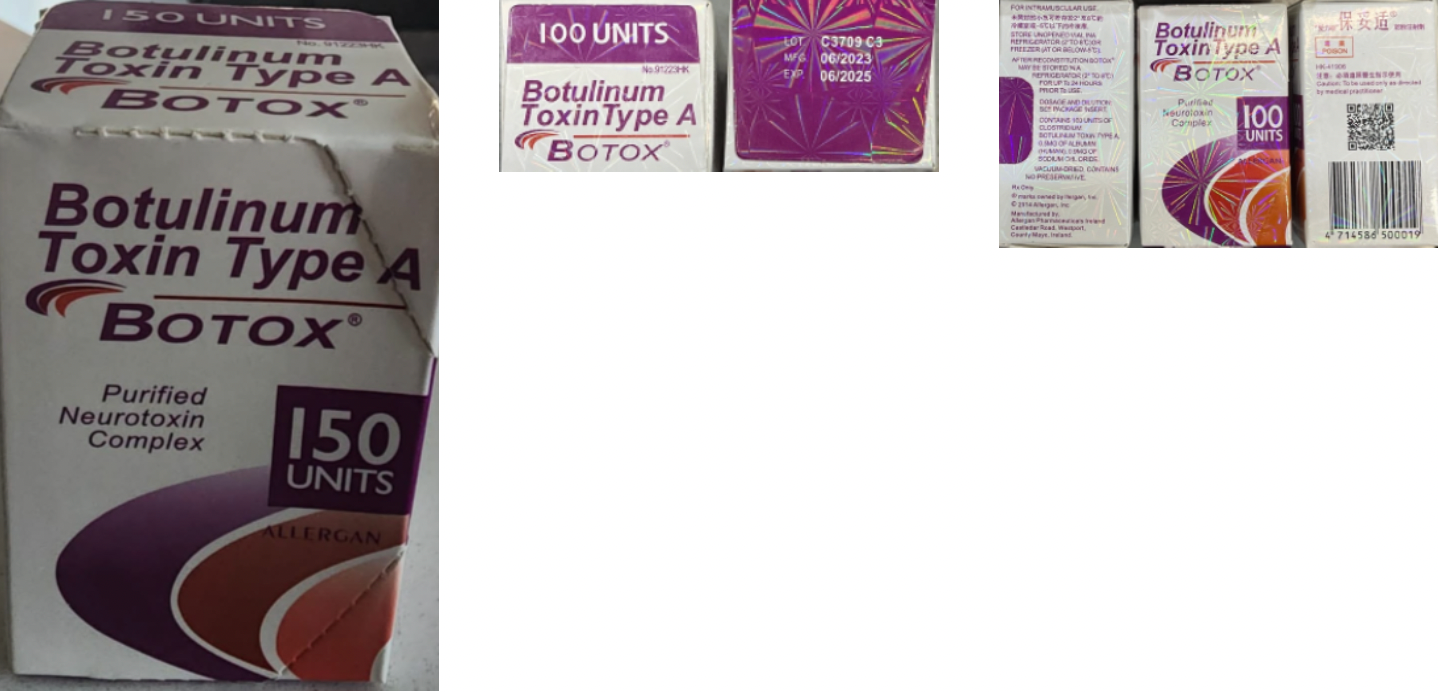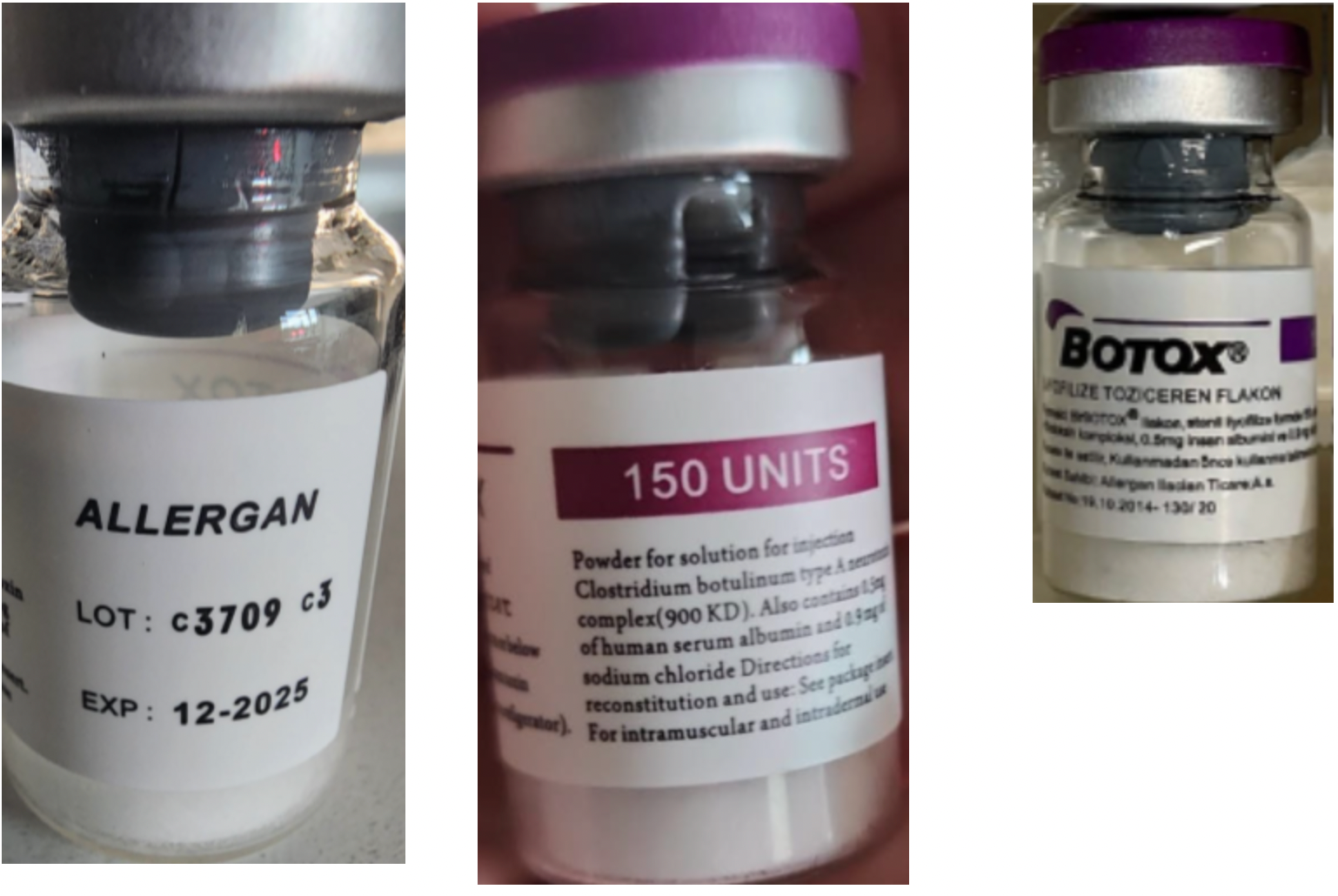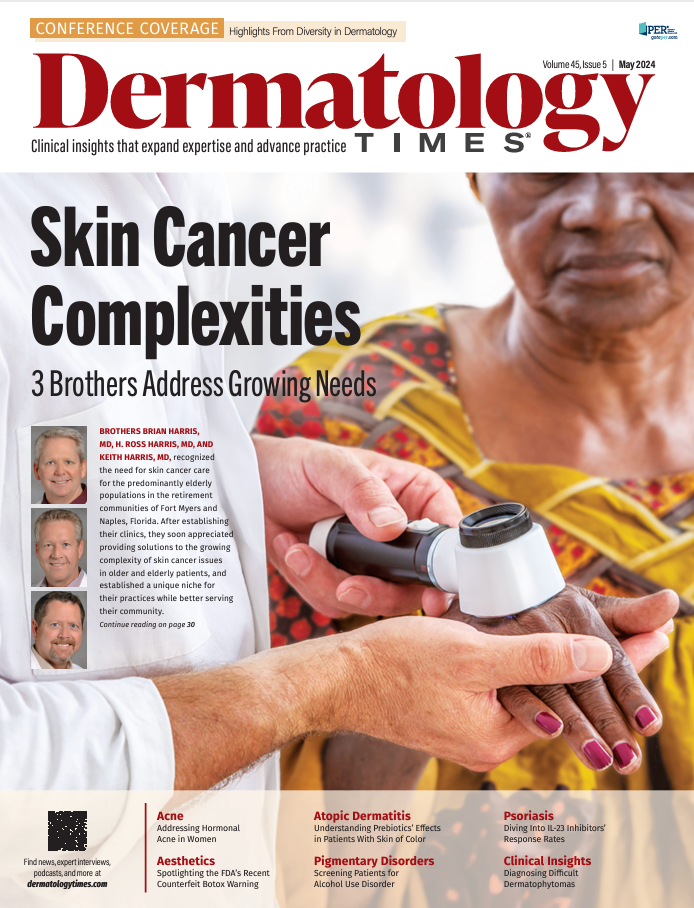- Case-Based Roundtable
- General Dermatology
- Eczema
- Chronic Hand Eczema
- Alopecia
- Aesthetics
- Vitiligo
- COVID-19
- Actinic Keratosis
- Precision Medicine and Biologics
- Rare Disease
- Wound Care
- Rosacea
- Psoriasis
- Psoriatic Arthritis
- Atopic Dermatitis
- Melasma
- NP and PA
- Skin Cancer
- Hidradenitis Suppurativa
- Drug Watch
- Pigmentary Disorders
- Acne
- Pediatric Dermatology
- Practice Management
- Prurigo Nodularis
- Buy-and-Bill
News
Article
Dermatology Times
FDA Issues Alert on Counterfeit Botox: What Dermatology Clinicians Need to Know
Author(s):
The FDA has released guidelines for clinicians and tips to identify the distinguishing features of counterfeit products.
The US Food and Drug Administration (FDA) has issued an urgent alert to health care professionals and consumers regarding the discovery of counterfeit botulinum toxin (Botox) products in several states. These counterfeit products have been administered for cosmetic purposes, leading to adverse events, including hospitalizations.1
Sonya Kenkare, MD, dermatologist at Illinois Dermatology Institute in Hinsdale, Illinois, responded to the recent news and told Dermatology Times, "Counterfeit Botox is an extremely scary injectable as it can result in systemic botulism and even death as a result of that. If a patient feels like they’re having systemic side effects from Botox it may be necessary for them to go to the emergency room and receive systemic treatment."
Counterfeit Botox packaging and vial | Image Credit: FDA

Adverse Events Linked to Counterfeit Botox
Patients who received the counterfeit botulinum toxin reported symptoms such as blurred or double vision, difficulty swallowing, dry mouth, constipation, incontinence, shortness of breath, weakness, and difficulty lifting their head. These symptoms mirror those observed when botulinum toxin spreads beyond the intended injection site.
A significant iatrogenic botulism outbreak occurred in Egypt between June and July 2017 due to the use of botulinum neurotoxin type A (BoNT-A) injections. Nine patients developed botulism symptoms after receiving BoNT-A injections for conditions such as cerebral palsy, spastic dystonia, and hyperhidrosis. Symptoms included muscle weakness, dysphagia, dizziness, dyspnoea, dysphonia, dysarthria, fatigue, diplopia, and blurred vision. Physical examinations revealed bilateral ptosis, diminished gag reflex, ophthalmoparesis, facial paresis, and tongue weakness.2
Patients were admitted to the hospital 5 to 10 days post-injection and received supportive care along with trivalent botulism antitoxin (250-500 IU). Full recovery took 6-12 weeks, with immediate improvement observed in severe symptoms. The outbreak was linked to an imported, unlicensed BoNT-A preparation named Neuroxin. The authorities ordered an immediate withdrawal of this product from the market.2
FDA’s Ongoing Investigation
The FDA is actively collaborating with the Centers for Disease Control and Prevention (CDC), state health departments, and AbbVie, the manufacturer of Botox, to identify, investigate, and remove the suspected counterfeit products from the market.
Risks Associated with Counterfeit Products
Both licensed and unlicensed individuals have administered these counterfeit products in non-medical or unlicensed settings. Such products are typically purchased from unlicensed sources, posing significant risks due to potential misbranding, adulteration, contamination, improper storage, and overall ineffectiveness.
Kenkare said, "If a patient is lucky enough to have had that treatment and not experienced very negative side effects I would still not recommend continuing with counterfeit Botox. I would wait for that product to wear off and continue managing them with FDA approved neurotoxin for their needs in the future."
3 Considerations for Dermatology Clinicians
1. Source Verification: Always verify the authenticity of Botox products before administration. Genuine Botox manufactured by AbbVie is available in 50-, 100-, and 200-unit dose forms. Look for the product descriptions on the outer cartons, which should read “BOTOX® COSMETIC / onabotulinumtoxinA / for Injection” or “OnabotulinumtoxinA / BOTOX® / for injection.” The manufacturer's name should either be “Allergan Aesthetics / An AbbVie Company” or “abbvie.” The active ingredient should be listed as “OnabotulinumtoxinA” on the outer carton and vial.
2. Legal Compliance: Federal law mandates that all health care providers only dispense or administer prescription drugs obtained from authorized sources. Ensure compliance by purchasing Botox from reputable and authorized suppliers.
3. Patient Education: Educate patients about the risks associated with counterfeit Botox and advise them to seek treatment only from licensed professionals using authentic products.
Identifying Counterfeit Botox
The counterfeit products may exhibit several distinguishing features:
- The lot number on the outer carton and vial is “C3709C3.”
- The active ingredient is labeled as “Botulinum Toxin Type A” instead of “OnabotulinumtoxinA.”
- The product is labeled as a 150-unit dose, which is not a unit produced by AbbVie or Allergan.
- The packaging contains non-English language.
Counterfeit Botox packaging | Image Credit: FDA

Counterfeit Botox vial | Image Credit: FDA

Consumer and Professional Reporting
If you suspect that you have encountered counterfeit Botox products, report them immediately to the FDA at 800-551-3989 or online at www.accessdata.fda.gov/scripts/email/oc/oci/contact.cfm. Healthcare professionals and consumers should also report any adverse events related to the use of Botox or suspected counterfeit medications to FDA's MedWatch Safety Information and Adverse Event Reporting Program either online through the MedWatch Online Voluntary Reporting Form or via fax at 1-800-FDA-0178.
Have you encountered counterfeit Botox or treated a patient injected by it? We would value your insight. Email DTEditor@mmhgroup.com.
References
- Counterfeit version of Botox found in multiple states. News release. US Food and Drug Administration. April 16, 2024. Accessed April 16, 2024. https://www.fda.gov/drugs/drug-safety-and-availability/counterfeit-version-botox-found-multiple-states?utm_medium=email&utm_source=govdelivery
- Rashid EAMA, El-Mahdy NM, Kharoub HS, Gouda AS, ElNabarawy NA, Mégarbane B. Iatrogenic Botulism Outbreak in Egypt due to a Counterfeit Botulinum Toxin A Preparation - A Descriptive Series of Patient Features and Outcome. Basic Clin PharmacolToxicol. 2018 Nov;123(5):622-627. doi: 10.1111/bcpt.13048. Epub 2018 Jun 21. PMID: 29786953.






